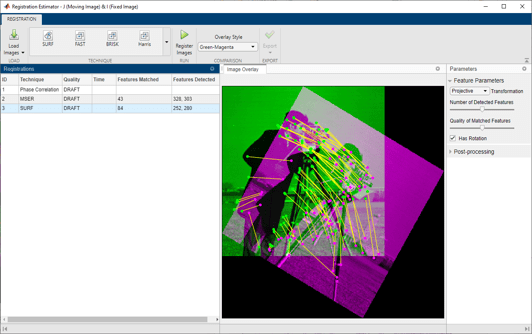图像配准器
配准二维灰度图像
打开 图像配准器 App
MATLAB® 工具条:在 App 选项卡上的图像处理和计算机视觉下,点击图像配准器图标。
MATLAB 命令提示符:输入
registrationEstimator。
编程用途
提示
您可以配准图像并为所有基于特征的方法生成函数,而无需 Computer Vision Toolbox™ 许可证。但是,要运行自动生成的使用基于特征的配准方法的函数,您必须有 Computer Vision Toolbox。有关详细信息,请参阅Export Results from Registration Estimator App。










